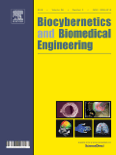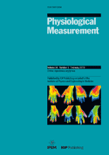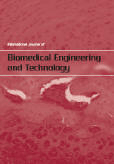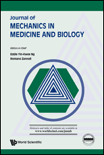
Wearable Technologies
Scope & Guideline
Unlocking Potential: The Future of Wearable Devices in Medicine
Introduction
Aims and Scopes
- Human Activity Recognition:
Research dedicated to the development of models and systems that utilize wearable sensors for recognizing and analyzing human activities, facilitating improved health monitoring and intervention. - Exoskeleton and Assistive Device Development:
Focus on the design, evaluation, and optimization of wearable robotic devices and exoskeletons aimed at aiding individuals with mobility impairments or enhancing physical performance in occupational settings. - Biomechanical Analysis and Modeling:
Studies that involve biomechanical simulations and modeling to assess the efficiency and effectiveness of wearable technologies, particularly in reducing physical strain and enhancing movement. - Sensor Technology and Data Analytics:
Exploration of innovative sensor technologies and data analysis methods, including machine learning and deep learning approaches, to enhance the capabilities and functionalities of wearable devices. - Tele-rehabilitation and Remote Monitoring:
Investigating the integration of wearables with telehealth solutions to enable remote monitoring and rehabilitation, improving access to care for patients with various conditions.
Trending and Emerging
- Integration of Soft Robotics:
An increasing number of studies are exploring soft robotics within wearable technologies, focusing on creating more adaptable and user-friendly assistive devices that enhance comfort and functionality. - Cognitive and Physical Interaction:
Research is trending towards understanding the cognitive impacts of wearable devices and how they can be designed to improve physical work performance, particularly in industrial settings. - Advanced Machine Learning Techniques:
The utilization of machine learning for processing and interpreting data from wearables has become a significant focus, enabling more accurate and efficient human activity recognition and health monitoring. - Telehealth Applications and Remote Monitoring:
With the rise of telemedicine, there is an emerging emphasis on using wearables for remote health monitoring and tele-rehabilitation, aimed at improving patient outcomes and accessibility. - Personalized Health Solutions:
A growing trend towards personalized and adaptive health solutions through wearables, leveraging user-specific data to tailor interventions and support for individual health needs.
Declining or Waning
- Traditional Wearable Fitness Tracking:
The earlier emphasis on basic fitness tracking devices has diminished, with a shift towards more complex, multifunctional wearables that address specific health conditions and rehabilitation needs. - Basic Health Monitoring Applications:
The focus on simple health monitoring applications (e.g., heart rate, step counting) has waned, as research increasingly targets sophisticated analytics and interventions using wearable technology. - Generalized Prototyping of Wearable Devices:
Interest in generic prototypes lacking specific application or user-centered design has decreased, with a stronger trend towards tailored solutions that meet the needs of targeted user groups.
Similar Journals

TECHNOLOGY AND HEALTH CARE
Advancing Health Through Technological IntegrationTECHNOLOGY AND HEALTH CARE, published by IOS PRESS, stands as a prominent interdisciplinary journal dedicated to the integration of technology within the healthcare sector. With an ISSN of 0928-7329 and an E-ISSN of 1878-7401, this journal has been a vital resource since its inception in 1993, providing insights and advancements in various categories including bioengineering, biomedical engineering, health informatics, and more. Though it currently holds a Q4 classification in several fields and Q3 in others, it actively contributes to the dialogue surrounding innovative methodologies and practices that enhance healthcare delivery. Researchers, professionals, and students will find the journal invaluable for its diverse range of studies that explore the convergence of technology and health. Its commitment to fostering impactful research continues to reinforce its relevance in the evolving landscape of healthcare technology.

JOURNAL OF CLINICAL MONITORING AND COMPUTING
Delivering vital insights for the future of critical care medicine.Journal of Clinical Monitoring and Computing is a notable publication in the fields of anesthesiology, critical care, and health informatics, published by Springer Heidelberg in the Netherlands. With an ISSN of 1387-1307 and an E-ISSN of 1573-2614, this journal has been a platform for advancing knowledge since its inception, covering vital topics relevant to the intersection of clinical monitoring, computing technologies, and their applications in healthcare. Holding a Q2 ranking in both Anesthesiology and Pain Medicine, as well as Critical Care and Intensive Care Medicine in 2023, it reflects a robust contribution to the scientific community. Furthermore, it maintains a respectable Scopus ranking with critical contributions recognized in the domain. By offering a blend of empirical research and theoretical discussions, Journal of Clinical Monitoring and Computing aims to inform and innovate practices that enhance patient care and outcomes. Although it is not an open-access journal, it remains an essential resource for professionals, researchers, and students seeking the latest advancements in medical monitoring technologies.

Acta of Bioengineering and Biomechanics
Nurturing academic inquiry to drive breakthroughs in biomaterials and biophysics.Acta of Bioengineering and Biomechanics is a distinguished academic journal published by Wroclaw University of Technology, Faculty of Computer Science & Management, focusing on the interdisciplinary fields of bioengineering and biomechanics. Since its inception in 2005, the journal has provided a platform for innovative research and critical reviews that contribute to the advancement of knowledge in areas such as biomaterials, biomedical engineering, and biophysics. Despite its current Q4 ranking in several categories, including Bioengineering and Biomaterials, it serves as a valuable resource for emerging scholars and seasoned professionals alike, highlighting the evolving landscape of research in these dynamic fields. The journal brings together a diverse range of studies, fostering collaboration and creativity among its readership. With its commitment to disseminating high-quality research, Acta of Bioengineering and Biomechanics plays an essential role in nurturing academic inquiry and professional growth within the scientific community in Poland and beyond.

Journal of Sensors and Sensor Systems
Pioneering Innovations in Sensor TechnologyThe Journal of Sensors and Sensor Systems, published by COPERNICUS GESELLSCHAFT MBH, is a prominent open-access journal that has been contributing to the fields of electrical and electronic engineering and instrumentation since its inception in 2012. With an ISSN of 2194-8771 and an E-ISSN of 2194-878X, this journal provides a critical platform for researchers, professionals, and students to disseminate innovative findings and advancements in sensor technology and system applications. As of 2023, it holds a respectable ranking in the third quartile for Electrical and Electronic Engineering and in the fourth quartile for Instrumentation, as per Scopus classifications. The journal is based in Göttingen, Germany, and emphasizes the importance of open access for broad dissemination of knowledge. By fostering interdisciplinary research and collaboration, The Journal of Sensors and Sensor Systems plays an essential role in advancing sensor technologies, ultimately driving progress in various scientific and engineering domains.

Biocybernetics and Biomedical Engineering
Leading the Charge in Biocybernetic ResearchBiocybernetics and Biomedical Engineering, published by ELSEVIER in the Netherlands, is a prestigious journal that stands at the forefront of the intersecting fields of biomedical engineering and artificial intelligence. With an impressive Impact Factor that places it in the Q1 category for Biomedical Engineering, this journal not only ranks 17th out of 303 in Scopus but also boasts a remarkable percentile ranking of 94th, highlighting its influence and relevance within the scientific community. Since its inception in 2008, Biocybernetics and Biomedical Engineering has aimed to publish cutting-edge research that integrates principles of cybernetics with technological advancements in health care, thereby fostering innovations that improve patient outcomes. Dedicated to advancing knowledge in biomedical technology, the journal serves as a vital resource for researchers, professionals, and students seeking to explore the latest developments and methodologies in the field.

Advanced Biomedical Engineering
Empowering knowledge sharing in engineering and biology.Advanced Biomedical Engineering is a peer-reviewed open access journal published by the Japanese Society for Medical & Biological Engineering, dedicated to disseminating high-quality research in the multidisciplinary fields of biomedical engineering. Boasting an ISSN of 2187-5219, this journal has been pivotal since its inception in 2018, especially as it embraces the open access model to foster knowledge sharing and wide accessibility. Centered in Tokyo, Japan, it serves as a vital platform for scholars and practitioners across various domains, such as biomaterials, biomedical engineering, and biotechnology. Despite currently residing in the Q4 quartile across several categories, including those in biotechnology and computer science applications, the journal is committed to elevating its academic impact and reputation, aiming for improved rankings in Scopus and other databases. Researchers and professionals are encouraged to contribute their innovative findings, discussions, and case studies, facilitating the advancement of this dynamic field.

Biomedical Engineering Letters
Advancing biomedical innovation through shared knowledge.Biomedical Engineering Letters, published by SpringerNature, is a prominent journal in the field of Biomedical Engineering. With a robust ISSN of 2093-9868 and E-ISSN of 2093-985X, this esteemed journal has established itself as a vital resource for researchers and professionals seeking to advance their knowledge and share groundbreaking findings. Recognized for its quality, Biomedical Engineering Letters holds a distinguished ranking in Scopus, positioned at #94/303 (69th percentile) in the Biomedical Engineering category. The journal covers a diverse scope within biomedical engineering, providing an important platform for innovative research from 2011 to 2024 and facilitating the exchange of ideas among scholars. Although it operates under a subscription model, the journal's commitment to enhancing the field makes it an indispensable reference for those engaged in cutting-edge biomedical research in Germany and globally.

PHYSIOLOGICAL MEASUREMENT
Advancing the Frontiers of Physiological Signal AnalysisPhysiological Measurement, published by IOP Publishing Ltd, is a leading journal dedicated to the field of physiological signal analysis and its applications across various domains including Biomedical Engineering, Biophysics, and Physiology. With its ISSN 0967-3334 and E-ISSN 1361-6579, the journal has established itself as a pivotal resource for researchers and professionals seeking to advance their understanding of physiological systems. The journal spans from 1993 to 2024 and boasts respectable rankings, holding a Q2 ranking in Biophysics and Q3 rankings in several other categories as of 2023. Despite lacking an Open Access format, it remains instrumental in disseminating significant research findings aimed at improving medical and engineering practices. Located in the United Kingdom, at TEMPLE CIRCUS, TEMPLE WAY, BRISTOL BS1 6BE, Physiological Measurement serves as a bridge for innovative research that informs both theoretical and practical aspects of physiology, encouraging interdisciplinary collaboration among scholars and specialists in the field.

International Journal of Biomedical Engineering and Technology
Bridging Disciplines for Tomorrow's Medical BreakthroughsThe International Journal of Biomedical Engineering and Technology, published by INDERSCIENCE ENTERPRISES LTD, serves as a pivotal platform for the dissemination of innovative research in the field of biomedical engineering. This journal, with ISSN 1752-6418 and E-ISSN 1752-6426, has been a valuable resource since its inception in 2007, boasting a converged publication timeline extending to 2024. Based in the United Kingdom, the journal aims to bridge the gap between engineering and biomedical sciences, facilitating interdisciplinary collaboration. As reflected in its 2023 Scopus ranking in the Q4 quartile of Biomedical Engineering, the journal remains accessible for researchers at various stages of their careers, contributing to its significance in promoting advancements in healthcare technologies. While currently not an open-access publication, the journal remains dedicated to enriching the biomedical engineering community by presenting novel research that addresses critical challenges, ultimately aiming to improve patient outcomes and drive innovation in medical devices and therapies.

Journal of Mechanics in Medicine and Biology
Bridging Disciplines for a Healthier FutureThe Journal of Mechanics in Medicine and Biology, published by World Scientific Publishing Co Pte Ltd, serves as a critical platform for interdisciplinary research at the intersection of engineering and biomedical sciences. With an ISSN of 0219-5194 and E-ISSN of 1793-6810, this esteemed journal has been dedicated to exploring the mechanical principles that govern biological systems since its inception in 2008. Based in Singapore, it addresses a diverse range of topics, from biomaterials to biomechanics, contributing valuable insights into the field’s evolving landscape. Although currently positioned in Q4 of Biomedical Engineering according to the 2023 category quartiles, it is poised for growth and increased visibility within the scientific community, fostering innovation and collaboration among researchers, professionals, and students alike. The journal emphasizes the importance of cutting-edge research and its practical implications, making it a vital resource for those striving to enhance the future of medical technologies and biological understanding.